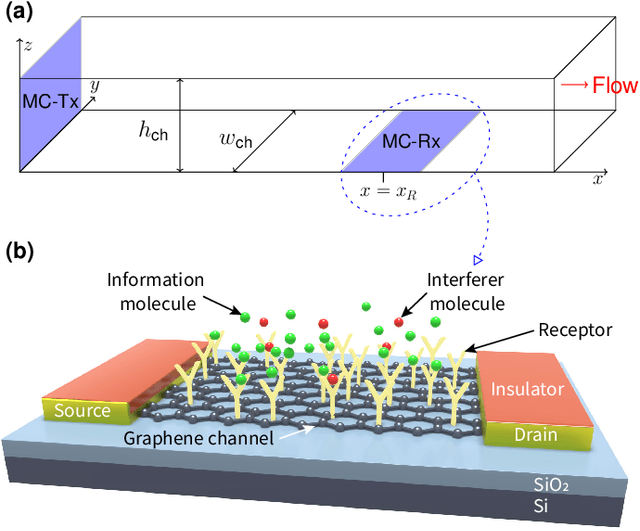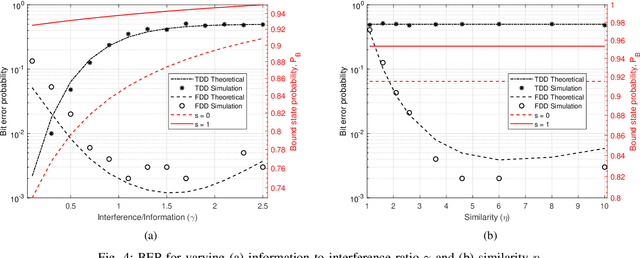Frequency-Domain Detection for Molecular Communication with Cross-Reactive Receptors
Paper and Code
Sep 17, 2023



Molecular Communications (MC) is a bio-inspired communication paradigm that uses molecules as information carriers, requiring unconventional transceivers and modulation/detection techniques. Practical MC receivers (MC-Rxs) can be implemented using field-effect transistor biosensor (bioFET) architectures, where surface receptors reversibly react with ligands. The time-varying concentration of ligand-bound receptors is translated into electrical signals via field effect, which is used to decode the transmitted information. However, ligand-receptor interactions do not provide an ideal molecular selectivity, as similar ligand types, i.e., interferers, co-existing in the MC channel, can interact with the same type of receptors. Overcoming this molecular cross-talk in the time domain can be challenging, especially when Rx has no knowledge of the interferer statistics or operates near saturation. Therefore, we propose a frequency-domain detection (FDD) technique for bioFET-based MC-Rxs that exploits the difference in binding reaction rates of different ligand types reflected in the power spectrum of the ligand-receptor binding noise. We derive the bit error probability (BEP) of the FDD technique and demonstrate its effectiveness in decoding transmitted concentration signals under stochastic molecular interference compared to a widely used time-domain detection (TDD) technique. We then verified the analytical performance bounds of the FDD through a particle-based spatial stochastic simulator simulating reactions on the MC-Rx in microfluidic channels.
 Add to Chrome
Add to Chrome Add to Firefox
Add to Firefox Add to Edge
Add to Edge